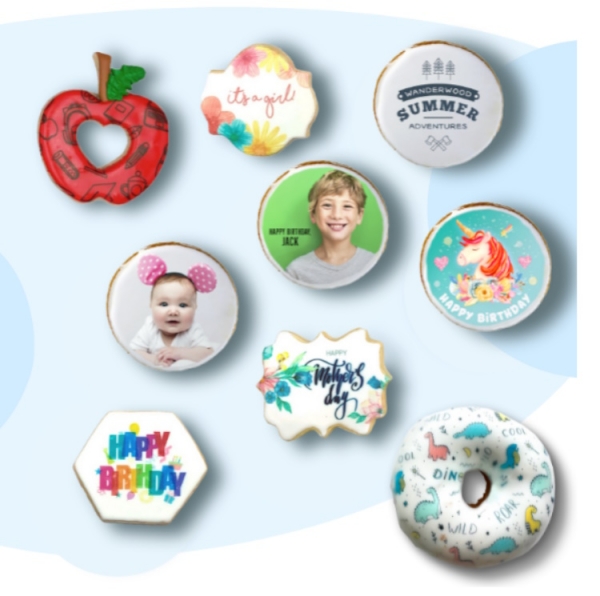Eddie takes cookie decoration to the next level
Say goodbye to intricate hand piping, delicate frosting sheets or extended drying time.
Primera’s edible ink printer prints full colour photographs, logos, designs and text directly onto the surface of many food items quickly and without fuss. And thanks to the use of natural food colourings, there’s no strange film or aftertaste.
“Eddie is an inkjet printer that uses food colourings to print onto cookies, macarons, fondant, white chocolate and a variety of different confections,” Jennifer Loegering, Primera’s marketing manager, told Bakery&Snacks.
“There's no sheet involved. It prints right onto the cookie’s surface.”
Small price, small footprint, big certifications
Primera Technology is one of the world’s leading manufacturers of specialised digital printing equipment – specifically medical printers – but recently moved into the food arena. The Minnesota-based company has used its expertise to design an automated, desktop direct-to-cookie printer that can be used by bakers – both informal and mass producers – along with confectioners, caterers, foodservice operators and event planners.
Eddie prints one cookie in 10 seconds, 12 in two minutes, and “about 350 cookies per hour,” added Loegering.
The price tag of $2,500 (€2,900) – approximate ink cost per print is $0.06 per 3" cookie – puts it easily within reach of both cottage bakers and bigger concerns.
The device holds up to 12 x 3.5” (90mm) cookies – up to 4.37” (110mm) – on a circulating tray. Each cookie is automatically drawn into the printer one at a time. It prints the surface, then rotates and feeds in the next cookie. However, it also accommodates usual shapes. While the carousel is designed for round cookies, manual feed allows bakers to print on hexagons and plaques one at a time.
Two different types of ink are available: one approved for use in the US while the other for the EU. Cyan and Yellow are identical in both formulations; the only difference is the Magenta composition.
“Eddie is a thermal inkjet printer, but the ink is food colouring, which is completely food safe. We have a formula for Europe and one for the US – there are different requirements for different countries – but all inks are certified as GMP components,” said Loegering.
Standing out from the crowd
Eddie is the first and only edible ink printer ever approved by NSF, a US-based company that certifies items used in food preparation. It is also kosher (Pareve) certified. By qualifying for this certification, Primera has distinguished itself from other edible ink printer manufacturers by supplying not only kosher inks but also ensuring that its entire product and production processes.
The system works on both Mac and Windows operating systems, using Preview or a software called bartender, a “simple template programme that allows you to size your confection … but most people create their designs in programmes like the Adobe products or Canva, which has thousands of images,” said Loegering.
Beyond the easy-on-the-pocket price tag and its small footprint – the entire machine is 16” x 31.2” x 7.12” (406mm x 792mm x 181mm) – Eddie really is designed to create new revenue streams for adventurous product developers.
Primera also offers free tech support for life of the printer, and a 30-day money back guarantee, although, according to Loegering, the company “almost get no returns. It's so robust.”
Watch this space
Loegering also gave us the heads up of a new system being launched this year.
“An automatic frosting machine called Freddy, which automatically frosts a cookie. Essentially, what it would do is it would take a picture of the cookie’s shape, pipe an edge along the edge of the cookie and flood it.”








